October 22, 2012
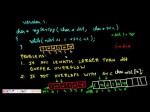
This video lecture is produced by S. Saurabh. He is B.Tech from IIT and MS from USA. Write your own implementation of strcpy. The function declaration is char* strspy(char* dst, const char* src). What are the problems associated with this function. This channel is an ultimate guide to prepare for job interviews for software engineers, software test engineers, computer scientists, engineering students specially computer science and IT engineers, Master of Computer Application (MCA) and Bachelor of Computer Application (BCA) students. The content of this channel will help students prepare for C,C++, Java, data structures and algorithms. It also covers courses related to networking and database. To study interview questions on Linked List watch www.youtube.com To prepare for programming Interview Questions on Binary Trees www.youtube.com To study programming Interview questions on Stack, Queues, Arrays visit www.youtube.com To watch all Programming Interview Questions visit www.youtube.com To learn about Pointers in C visit www.youtube.com To learn C programming from IITian S.Saurabh visit www.youtube.com “strcpy c” “strcpy in c code” “strcpy implementation” “strdup vs strcpy” “strcpy in c language” “strcpy source” “strcpy header file”
Tags: bachelor, binary-trees, channel, data-structures, education, function, linked-list, Problems, programming, software-test, strcpy-header, strcpy-source, ultimate-guide, usa, video
Posted in Software Functioning Abnormally | No Comments »
October 22, 2012
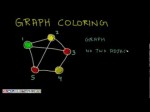
This video lecture is produced by S. Saurabh. He is B.Tech from IIT and MS from USA. Propose an algorithm to color a given graph G(V,E) using minimum number of colors. This channel is an ultimate guide to prepare for job interviews for software engineers, software test engineers, computer scientists, engineering students specially computer science and IT engineers, Master of Computer Application (MCA) and Bachelor of Computer Application (BCA) students. The content of this channel will help students prepare for C,C++, Java, data structures and algorithms. It also covers courses related to networking and database. To study interview questions on Linked List watch www.youtube.com To prepare for programming Interview Questions on Binary Trees www.youtube.com To study programming Interview questions on Stack, Queues, Arrays visit www.youtube.com To watch all Programming Interview Questions visit www.youtube.com To learn about Pointers in C visit www.youtube.com To learn C programming from IITian S.Saurabh visit www.youtube.com “graph coloring algorithm” “graph coloring algorithm using backtracking ppt” “graph coloring algorithm source code” “a graph coloring algorithm for large scheduling problems” “graph coloring algorithm with example”
Tags: bachelor, beat-making, binary-trees, channel, courses-related, data-structures, education, functioning abnormally, interview, linked-list, programming, study-interview, ultimate-guide, windows
Posted in Software Functioning Abnormally | No Comments »
October 22, 2012
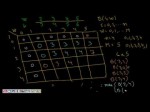
This video lecture is produced by S. Saurabh. He is B.Tech from IIT and MS from USA. Give solution for the 0/1 knapsack problem. That is given weights w1,w2,w3…wn and benefits b1,b2,b3,…,bn and maximum capacity of knapsack is M, find the items that we will choose to maximize the benefit. You cannot take fractions of item you have to choose it or leave it. This channel is an ultimate guide to prepare for job interviews for software engineers, software test engineers, computer scientists, engineering students specially computer science and IT engineers, MCA and BCA students. The content of this channel will help students prepare for C,C++, Java, data structures and algorithms. It also covers courses related to networking and database. This channel can be used by students of NIIT, IGNOU etc too. To study interview questions on Linked List watch www.youtube.com To prepare for programming Interview Questions on Binary Trees www.youtube.com To study programming Interview questions on Stack, Queues, Arrays visit www.youtube.com To watch all Programming Interview Questions visit www.youtube.com To learn about Pointers in C visit www.youtube.com To learn C programming from IITian S.Saurabh visit www.youtube.com “0 1 knapsack problem” , “0/1 knapsack problem using dynamic programming”, “knapsack problem using greedy method”, “knapsack problem using branch and bound”
Tags: benefit, binary-trees, data-structures, education, find-out-how, find-the-items, interview, out-how, programming, software problems, store-tickets, ultimate-guide, usa, using-dynamic, video
Posted in Software Functioning Abnormally | No Comments »
October 15, 2012
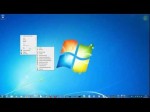
How to set-up file sharing between Mac OSX and Windows 7. In this Lucid Nerd tutorial I will cover the basic steps needed to network Mac OSX with Windows 7, including how to set-up wireless file sharing and ethernet file sharing so you can transfer your files with ease. LUCID NERD LINKS: Subscribe: www.youtube.com Lucid Nerd Channel Page: www.youtube.com Lucid Nerd Blog: www.lucidnerd.wordpress.com Follow on Twitter twitter.com Facebook Page: www.facebook.com Google+ Page: Add us to your circles. plus.google.com Lucid Nerd on iTunes: itunes.apple.com Lucid Nerd Channel Description: The Lucid Nerd is a channel offering beginner computer tutorials covering everything form computer basics to web development and computer programming. VIDEO RELATED LINKS: None. REPEATED TAGS FOR SEO: Specific Tags: Share Files “Mac OSX” “Windows 7” “Lucid Nerd” Tutorial Networking “File Sharing” General Tags: “Lucid Nerd” “Computer Tutorials” “Computer How To’s” “Beginner Computer Tutorials” Computer Tutorials Beginner “Web Development” “Computer Programming” “Windows 7” “Mac OSX” Educational Help
Tags: channel-page, computer problems, everything-form, facebook-page, general-tags, lucid, lucid-nerd, programming, sharing, specific-tags, tutorial, video
Posted in Slow Working Computer | No Comments »
September 4, 2012
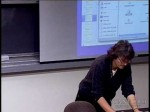
Lecture 11 by Julie Zelenski for the Programming Abstractions Course (CS106B) in the Stanford Computer Science Department. Julie continues with recursive backtracking and introduces pointers and recursive data. Following, she focuses on solving the problems rather than the exact code and later uses the example of a program that will solve a Sudoku puzzle. She explains that recognizing and looking for patterns between all of the different recursive examples is an important component to learning recursion. Complete Playlist for the Course: www.youtube.com CS 106B Course Website: cs106b.stanford.edu Stanford Center for Professional Development scpd.stanford.edu Stanford University: www.stanford.edu Stanford University Channel on YouTube: www.youtube.com
Tags: c++, education, language, permutation, problems-rather, programming, science, stanford-university
Posted in Software Functioning Abnormally | No Comments »
July 27, 2012
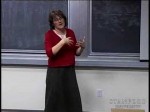
Lecture 23 by Julie Zelenski for the Programming Abstractions Course (CS106B) in the Stanford Computer Science Department. Julie shows a YouTube video of Barack Obama answering a question about what kind of sorting algorithm he would use to sort a list of data. She also gives several examples of problems that are capable of being solved with sorting. She goes on to say that if you think about certain problems as graphs, finding the solution is sometimes easier as well as easier to understand. To be able to do this, she explains how to represent graphs in C++. Complete Playlist for the Course: www.youtube.com CS 106B Course Website: cs106b.stanford.edu Stanford Center for Professional Development scpd.stanford.edu Stanford University: www.stanford.edu Stanford University Channel on YouTube: www.youtube.com
Tags: being-solved, connections, course-website, easier-as-well, functioning abnormally, programming, recursive, she-explains, software problems, sorting, stanford-university, technology
Posted in Software Functioning Abnormally | No Comments »
June 23, 2012
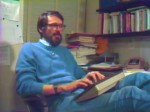
Watch new AT&T Archive films every Monday, Wednesday and Friday at techchannel.att.com In the late 1960s, Bell Laboratories computer scientists Dennis Ritchie and Ken Thompson started work on a project that was inspired by an operating system called Multics, a joint project of MIT, GE, and Bell Labs. The host and narrator of this film, Victor Vyssotsky, also had worked on the Multics project. Ritchie and Thompson, recognizing some of the problems with the Multics OS, set out to create a more useful, flexible, and portable system for programmers to work with. What’s fascinating about the growth of UNIX is the long amount of time that it was given to develop, almost organically, and based on the needs of the users and programmers. The first installation of the program was done as late as 1972 (on a NY Telephone branch computer). It was in conjunction with the refinement of the C programming language, principally designed by Dennis Ritchie. Because the Bell System had limitations placed by the government that prevented them from selling software, UNIX was made available under license to universities and the government. This helped further its development, as well as making it a more “open” system. This film “The UNIX System: Making Computers More Productive”, is one of two that Bell Labs made in 1982 about UNIX’s significance, impact and usability. Even 10 years after its first installation, it’s still an introduction to the system. The other film, “The UNIX System: Making …
Tags: alfred, basic, branch-computer, helped-further, history, lorinda, programming, tech, unix, victor
Posted in Software Functioning Abnormally | No Comments »
June 11, 2012
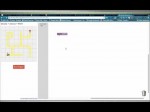
docs.google.com code.google.com I would really like to see a demo on blockly to create / solve math problems. Most schools drill drill drill on math but rarely connect math to logic and even less so math to coding logic and algorithms. Please consider making a demo for math problems… a couple of good reasons: a)it will get more teachers to start using blockly in the classroom b) it will solidify the connection between math / logic/ coding further resources: khan academy and codecademy example: www.codecademy.com
Tags: between-math, demo-on-blockly, drill-on-math, gui, math, more-teachers, programming, rarely-connect, resources, schools-drill, science & technology, software problems, software tutorial, technology, the-classroom
Posted in Software Functioning Abnormally | No Comments »
December 28, 2011
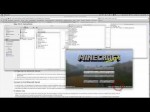
How to make a minecraft 1.0.0 server on a PC: www.youtube.com Hey guys! If anyone is having problems then go check out this video. Hopefully it will solve your problems! www.youtube.com This video tells you how to make a minecraft 1.0.0 server using hamachi. We use craftbukkits server instead of mincraft_server. This will work on mac and pc however you do not use the start.command. Instead in notepad copy and paste this: java -Xms1000M -Xmx1000M -jar minecraft_server.jar and save as start.bat in you server folder. Hamachi Download: secure.logmein.com Minecraft_server.jar download: www.minecraft.net Craftbukkit server download: ci.bukkit.org Setting up Your Server: www.minecraftwiki.net
Tags: apple, computers, linux, macintosh, metin2, microsoft windows, Problems, program, programming, runescape, server-download, server-instead, technology, visual basic, windows
Posted in Software Functioning Abnormally | No Comments »
December 17, 2011
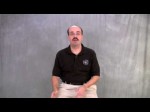
Learn Neural Net Programming: www.heatonresearch.com Introduction to Neural Networks with C# is a course that introduces the C# programmer to the world of Neural Networks and Artificial Intelligence. Neural network architectures, such as the feedforward, Hopfield, and self-organizing map architectures will be presented. Training techniques, such as backpropagation, genetic algorithms and simulated annealing are also introduced. Practical examples are given for each neural network. Examples will be examined that include the traveling salesman problem, handwriting recognition, financial prediction, game strategy, mathematical functions, and Internet bots.
Tags: education, heaton, hopfield, internet, neural, neural network, pattern recognition, programming, simulated annealing, traveling
Posted in Internet Network Problem | No Comments »












